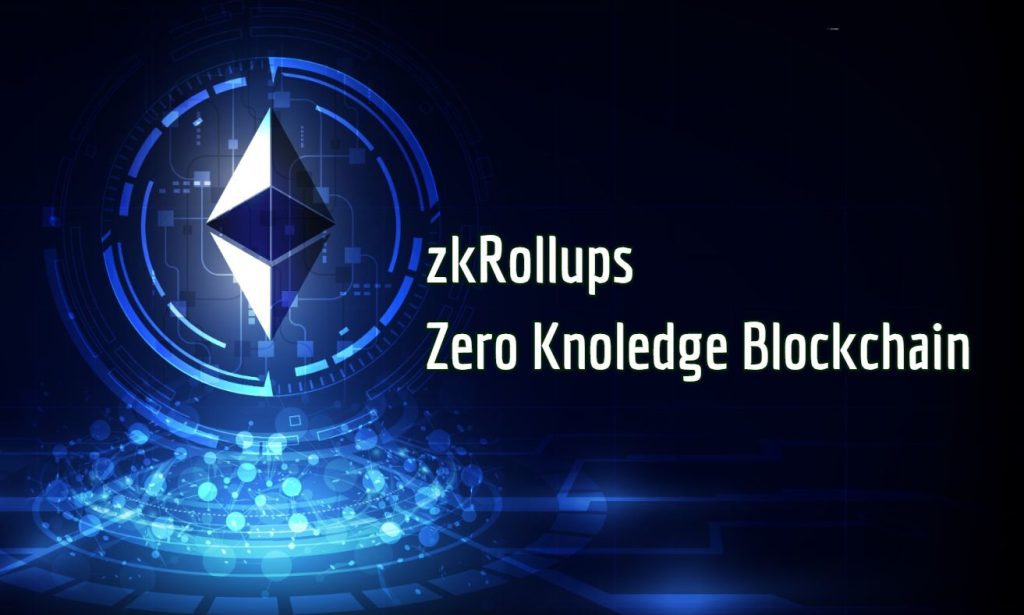For anyone involved in the crypto space, understanding the concept of zk rollups is becoming increasingly critical. But what is zk rollup? Derived from the concept of zk-SNARKs (Zero-Knowledge Succinct Non-Interactive Argument of Knowledge), zk rollup is a second-layer scaling solution designed to enhance the efficiency of blockchain networks, primarily Ethereum.
What is a Zero Knoledge Rollup?
The core principle of this type of rollup is about increasing the number of transactions that can be processed at once, effectively ‘rolling up’ multiple transactions into a single one. This is achieved by bundling several transactions together and generating a single proof, or zk-SNARK, that represents all of them. The compiled transactions are then stored on-chain, while the computation and state transitions are taken off-chain.
The beauty of zk rollup lies in its ability to provide data availability directly on the main chain. It holds all transaction data within the network and enables users to independently verify the accuracy of transactions, fostering trustless security.
A prominent zk rollup example would be zkSync, a protocol built by Matter Labs that is specifically designed to bring a Visa-scale level of throughput to Ethereum while keeping the funds as secure as in the underlying L1 accounts.
Advantages of ZK Rollups
Zk rollups are gaining popularity in the crypto world due to the host of benefits they offer. The primary advantage is their potential to solve the scalability issue plaguing Ethereum and other blockchain networks. With zk rollups, these networks can handle a significantly higher number of transactions per second (TPS), which directly translates to faster and cheaper transactions.
But the advantages don’t stop at scalability. One of the critical aspects of Zero Knoledge rollups is their ability to maintain the security of the main blockchain network. In the zk rollup design, data is kept on-chain, meaning that even if the Layer 2 system fails, users can still recover their funds, thereby providing a highly secure environment.
Additionally, zk rollups are designed to work seamlessly with Ethereum smart contracts. This interoperability feature is expected to reduce friction and increase adoption as it allows developers to deploy their contracts on Layer 2 without making any changes.
Given these advantages, zk rollups play a key role in the burgeoning field of decentralized finance (DeFi). By facilitating high transaction throughput at low cost, they are well-poised to power the next generation of DeFi applications and other blockchain-based solutions.
Investing in ZK Rollups
For crypto enthusiasts, the zk rollup presents an exciting investment opportunity. Investing in zk rollups can be accomplished in several ways. One is by purchasing tokens of projects that leverage Zero Knoledge rollups technology. Zk-rollup tokens, such as the zkSync’s native token, can be obtained on various crypto exchanges.
Before investing in zk rollups, it’s essential to conduct thorough research. This includes understanding the specific zk rollup project, its technical merit, the problem it aims to solve, and the team behind it. Checking the project’s roadmaps and progress can also provide insight into its potential for future success.
Another approach is to directly participate in the network. Some zk rollup projects offer staking opportunities, allowing investors to earn rewards for securing the network. However, this usually requires a more in-depth understanding of how Zero Knoledge rollups work.
Moreover, remember that investing in crypto, including zk rollups, comes with risks. Prices can be volatile, and there is a chance of losing your investment. Therefore, it’s always wise to invest responsibly and only what you can afford to lose.
The Future of ZK Rollups
As the blockchain space continues to evolve, this rollups are set to play a significant role in its future, especially in Ethereum’s ecosystem. This is primarily because Ethereum has been struggling with scalability issues, and zk rollups provide a feasible solution that doesn’t compromise security.
With the advent of Ethereum 2.0 and the upcoming Shanghai upgrade, the role of zk rollups is likely to become even more pronounced. These upgrades aim to reduce gas fees and optimize gas fee consumption, thereby benefiting Layer-2 solutions like Zero Knoledge rollups.
Moreover, the integration of EVM Object Format (EOF) in the Shanghai upgrade would make Ethereum more compatible with zk rollups. This would further enhance Ethereum’s position as the largest blockchain network supporting smart contracts, encouraging more developers to build on Ethereum and adopt Layer-2 solutions like zk rollups.
Furthermore, as zk rollups continue to gain traction, we could see more projects adopting this technology. For example, there is already a growing list of zk rollup projects, including zkSync, Loopring, and Hermez, which are providing scalable, efficient, and secure solutions for their users.









